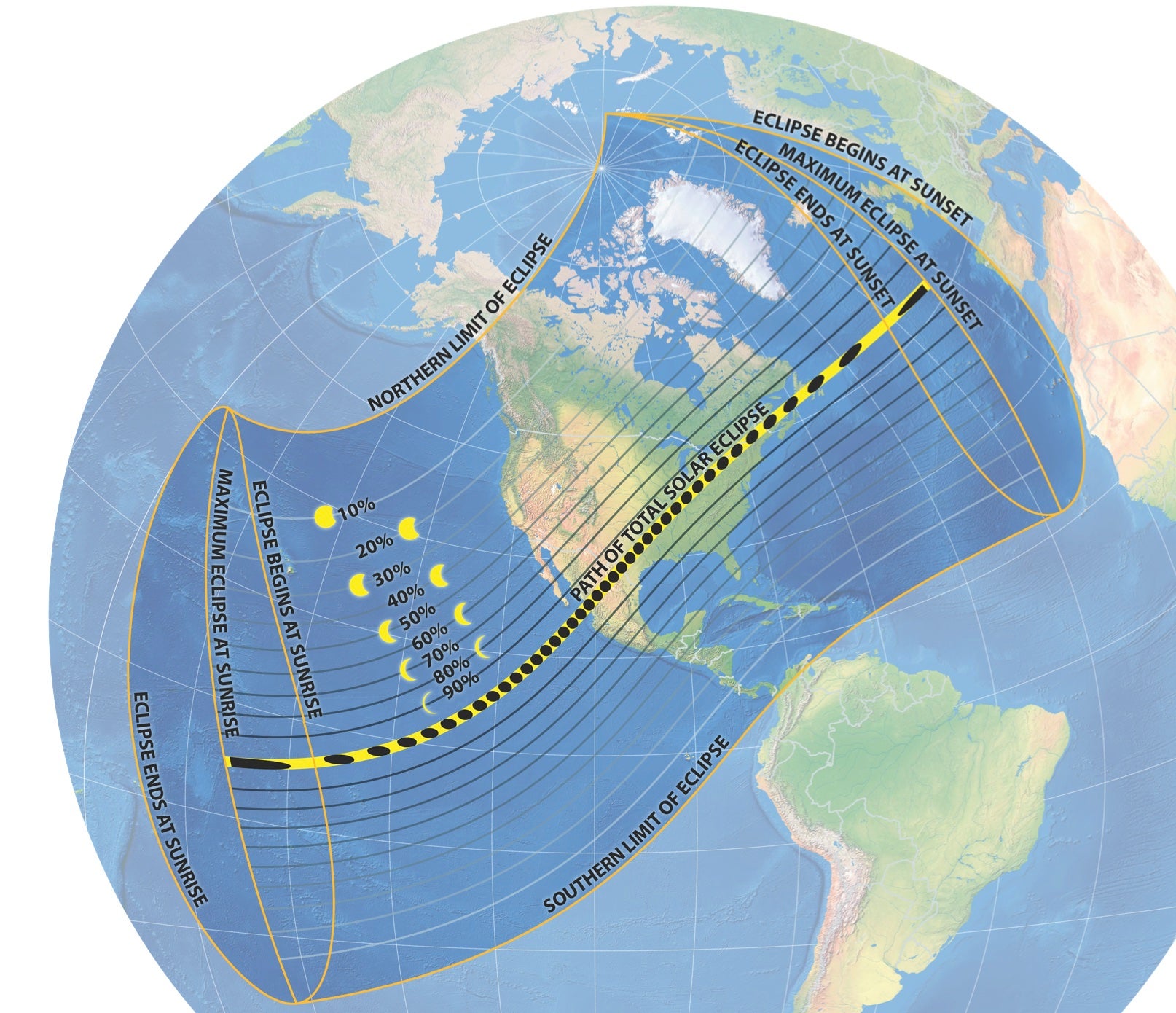
After six years, seven months, and 18 days, a total eclipse of the Sun will once again cross North America.
The total solar eclipse of April 8, 2024, will dazzle tens of millions of people from Mazatlán, Mexico, to the shores of Newfoundland, Canada, just north of St. John’s. The U.S. states touched by totality are Texas, Oklahoma, Arkansas, Missouri, Tennessee, Illinois, Kentucky, Indiana, Ohio, Michigan, Pennsylvania, New York, Vermont, New Hampshire, and Maine.
Inside the path of totality, the sky will suddenly darken to a deep twilight and the Sun’s magnificent corona will appear around the pitch-black disk of the eclipsing Moon. Totality is easily one of the most beautiful natural sights, and people will come from all over the globe to see the corona’s majesty.
Nearly all of North America except for Alaska will have the opportunity to view and enjoy at least a partial solar eclipse. (Don’t feel sorry for Alaska, though — it will be the only place in the U.S. to see the total solar eclipse of March 30, 2033.)
The impact of totality
The 2024 total solar eclipse will have an even greater impact than the 2017 eclipse across America. The reasons are population, proximity, duration, and public memory.
- Within the U.S., more than 31 million people live inside the path of totality, as compared to 12 million people inside the path in 2017. Millions more reside within the path in Mexico and Canada, especially the more populated cities of Mazatlán, Torreón, Montreal, Toronto, and Ottawa.
- The path of totality comes within 200 miles (322 kilometers) of major cities of the U.S. Eastern Seaboard: Washington, D.C.; Baltimore; Philadelphia; New York; and Boston. Additionally, over half the nation’s population lives within 250 miles (400 km) of the path of totality.
- The duration of the 2024 eclipse is nearly twice that of the 2017 eclipse. This will attract additional visitors.
- The U.S. national memory of a total solar eclipse is relatively fresh from 2017. Before the 2017 eclipse, the last total solar eclipse on the U.S. mainland was in 1979, a gap of 38 years. Those who remember missing out on the great spectacle just six years ago will most likely make plans to attend this eclipse.
Witnessing a total solar eclipse is truly a peak life experience and well worth the travel to any location along the path of totality.
Maps of totality
NOTE: Click on each map below to expand it for a larger view.
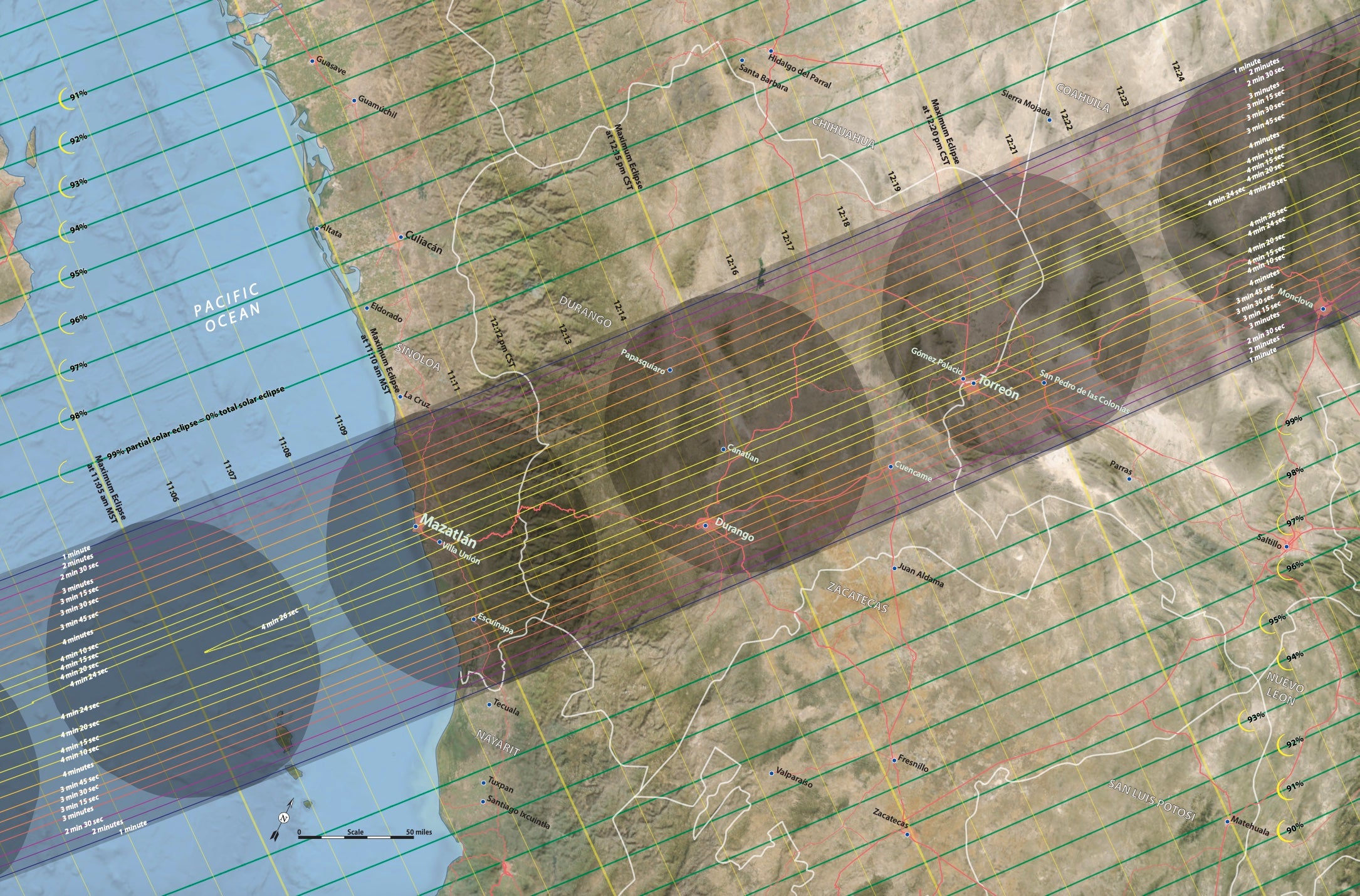
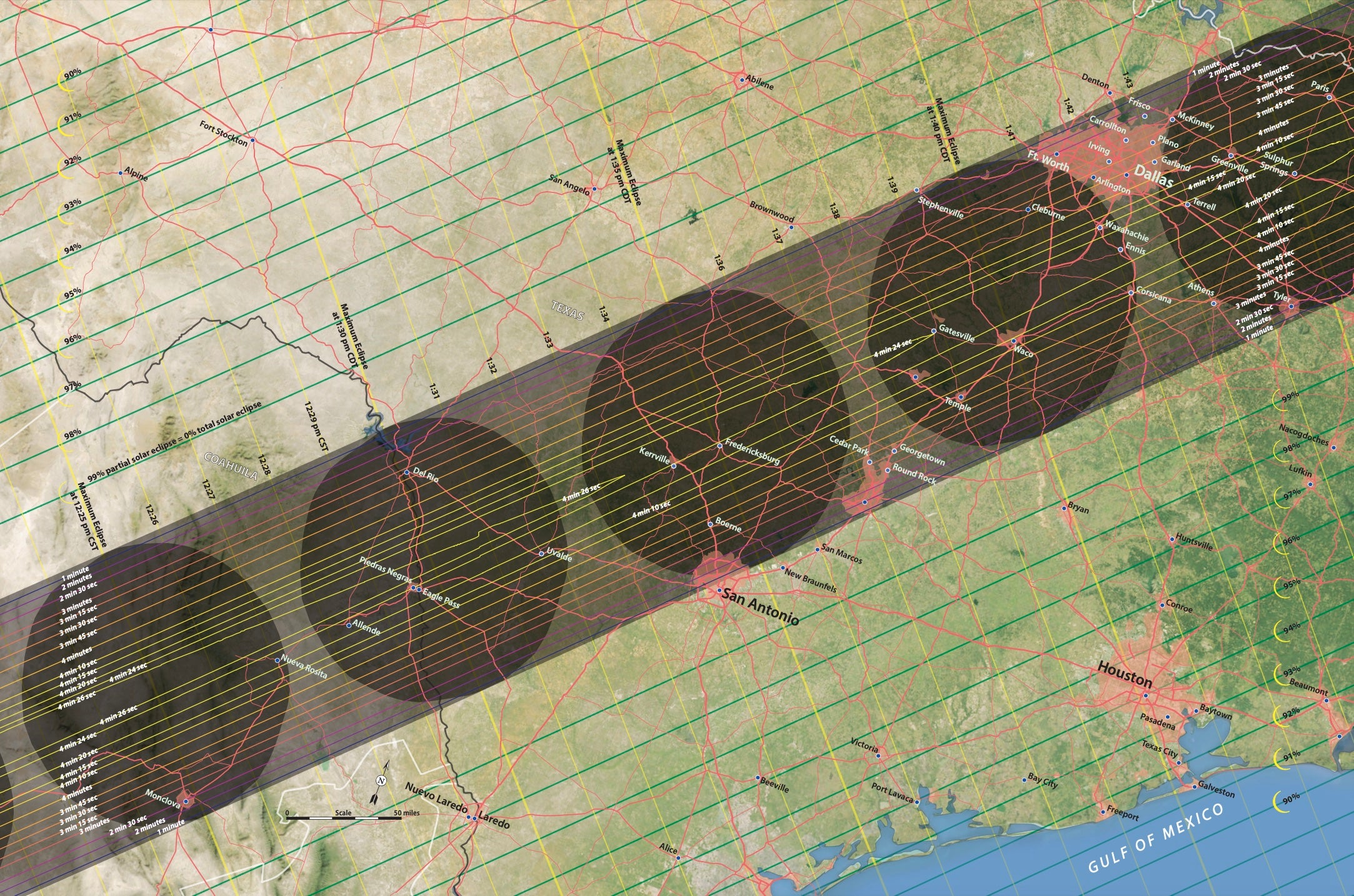
Reading the maps of totality
These eclipse maps will guide you to the best location to observe this April’s total solar eclipse. The maps address three questions frequently asked by eclipse travelers: Where are the best places to see the total solar eclipse? How long will totality be at my location? And what time will totality begin?
In general, you want to be as close to the center of the path of totality as possible to see the longest duration of totality.
On the maps of totality, the dark gray diagonal belt is the path of totality where the Moon’s shadow will travel from west to east. The ovals along the path show the Moon’s shadow at five-minute intervals. The shape of the shadow incorporates the precise shape of the Moon’s limb at the time of totality. Cities inside the path of totality are marked by white color-coded font. The highway system is light red; the thickest lines are interstate highways.
The yellow lines perpendicular to the path of totality, with times also indicated in black, show the local time of maximum eclipse. Outside the path of totality, this is the time of maximum partial eclipse. Inside the path of totality, the time colored in white indicates the midpoint of totality (maximum eclipse).
You can estimate how long totality will last at your location by reading the curves of totality duration within the path, from the central yellow oval to the outer dark purple lines. For example, Hamilton, Ontario, gets just under 2 minutes of totality and Erie, Pennsylvania, receives 3 minutes 44 seconds.
Along the sides of the maps, the crescent Sun figures with percent values indicate the Sun’s appearance at maximum eclipse. The values given are eclipse obscurations, the fraction of the Sun’s disk occulted by the Moon.
NOTE: Click on each map below to expand it for a larger view.
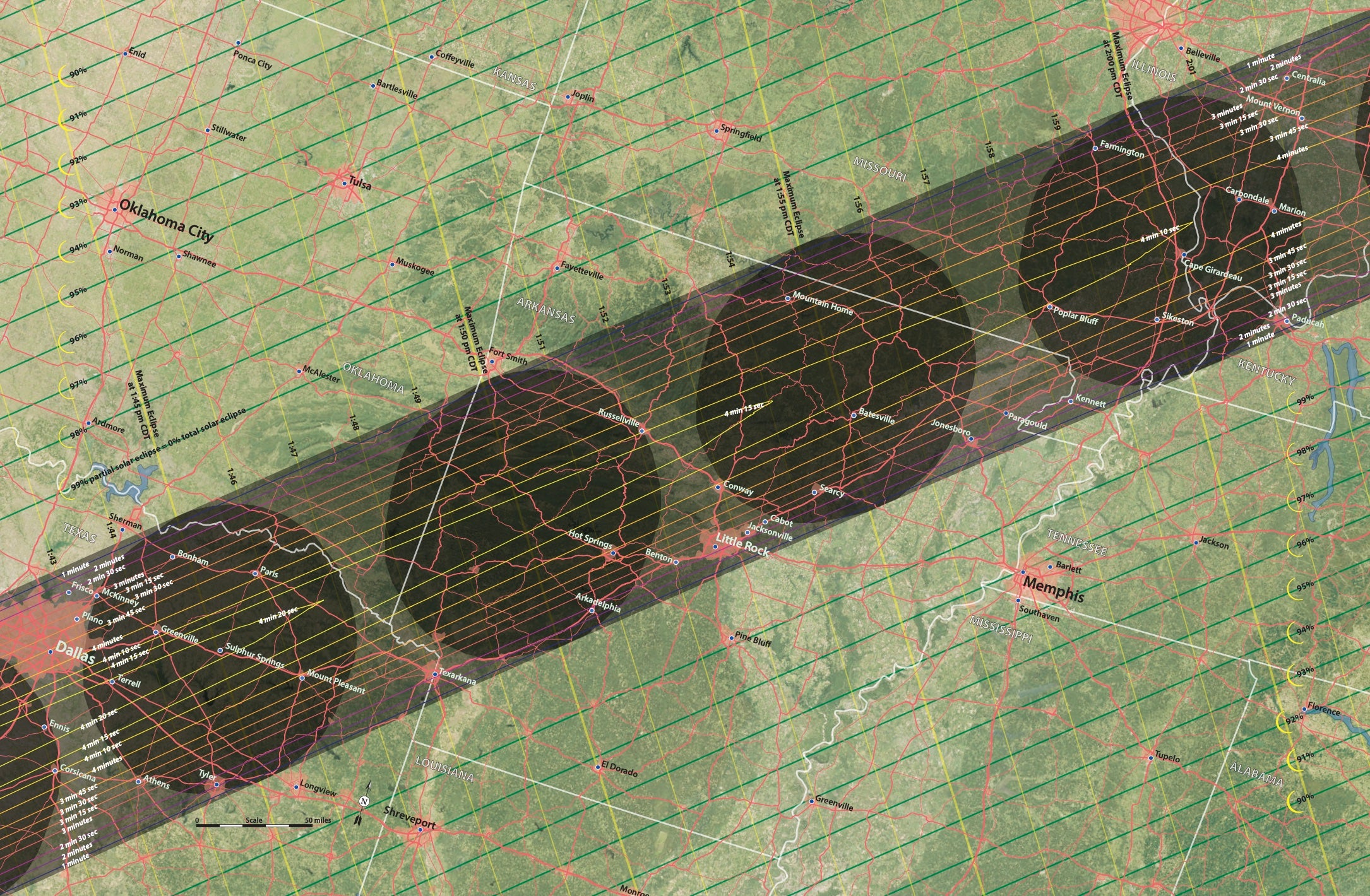
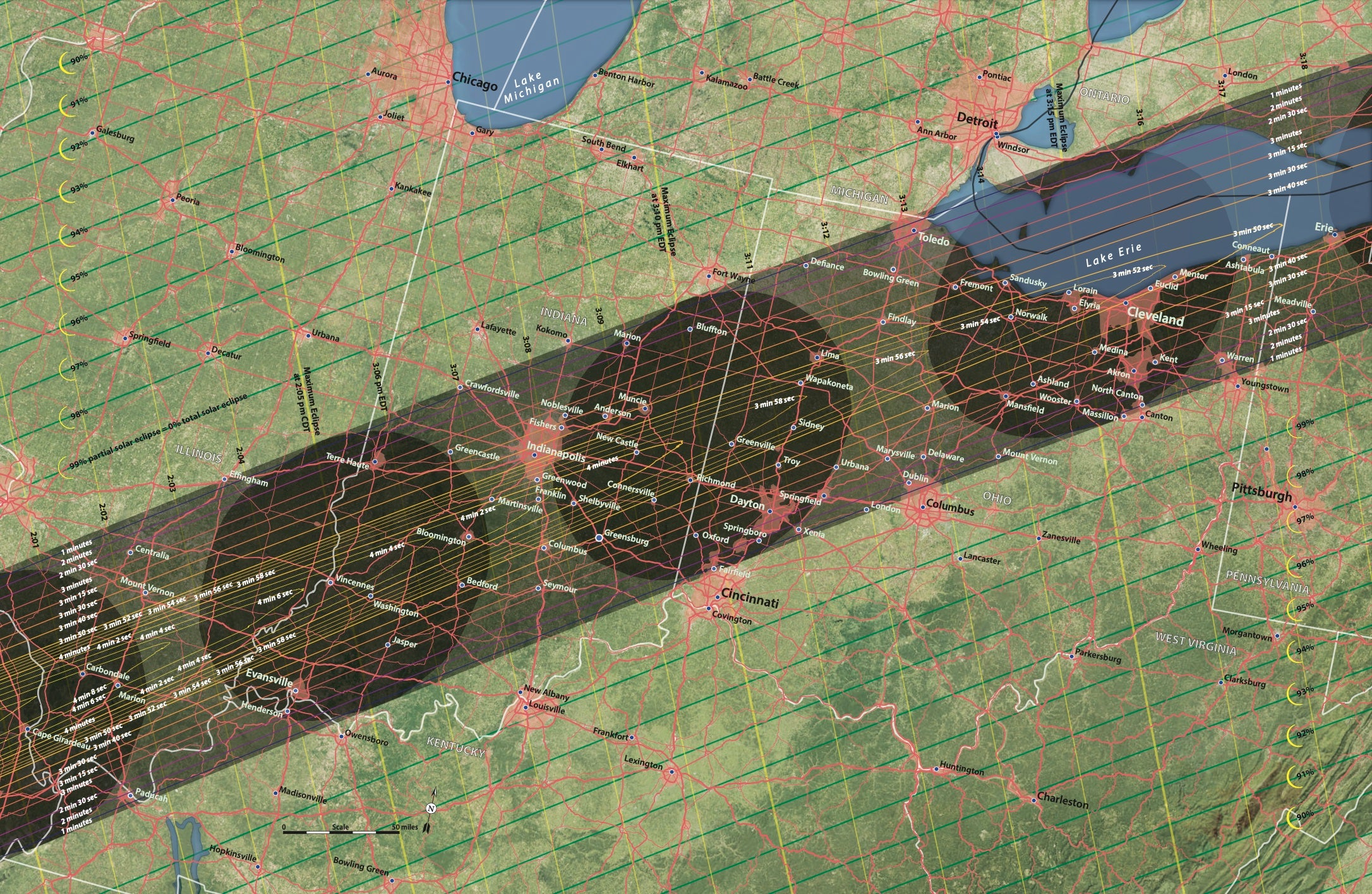
Stack your odds on eclipse day
Eclipse chasers are obsessive about weather because it is the primary factor for success on eclipse day. Here are tips to use alongside these maps to ensure you view the best total solar eclipse.
- Choose a base location with favorable weather prospects and a good highway system for relocation if needed. You can also consult “Your eclipse weather forecast” on this web site or https://eclipsophile.com, both created by meteorologist Jay Anderson, for a thorough review of the climatology along the path of totality in April.
- Starting about a week before the eclipse, weather models will give a general indication of conditions at your location on eclipse day. Each day, keep an eye on how the models evolve and make your contingency plan for eclipse day. From your base, pick one spot inside the path of totality to the southwest and another to the northeast, and see which site’s weather is more promising. You can access the latest weather models and satellite imagery here on Eclipsophile.com.
- Study satellite weather imagery beginning the evening before the eclipse. If you need to relocate to a back-up location, either leave that night or in the pre-dawn hours of eclipse day.
- Keep a full gas tank or electric charge and have plenty of essential supplies on hand. Meals in restaurants may or may not be available (or quick), so carry food and drinks. Don’t forget your eclipse viewers as well as other fun items to cast partial eclipse shadows, such as a kitchen colander.
- After the eclipse, be prepared for traffic jams and long drive times. Phone maps with a traffic layer may help guide you around the worst traffic.
I’ve never met a single person who has traveled near or far to observe a total solar eclipse and regretted the effort to do so. Totality is an outstanding spectacle that makes this level of preparation and action more than worthwhile. Use these maps to plan your perfect eclipse!
NOTE: Click on each map below to expand it for a larger view.
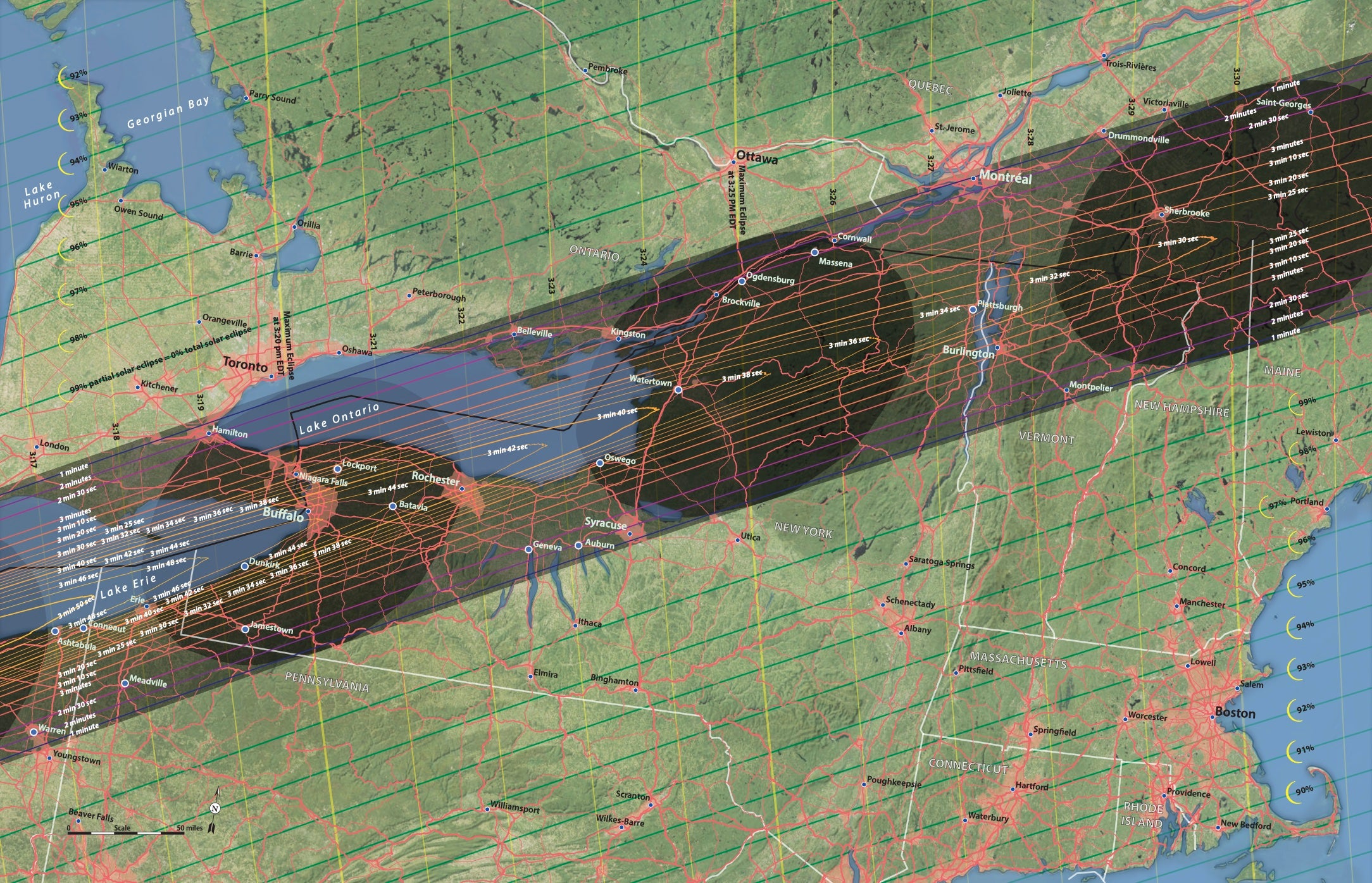
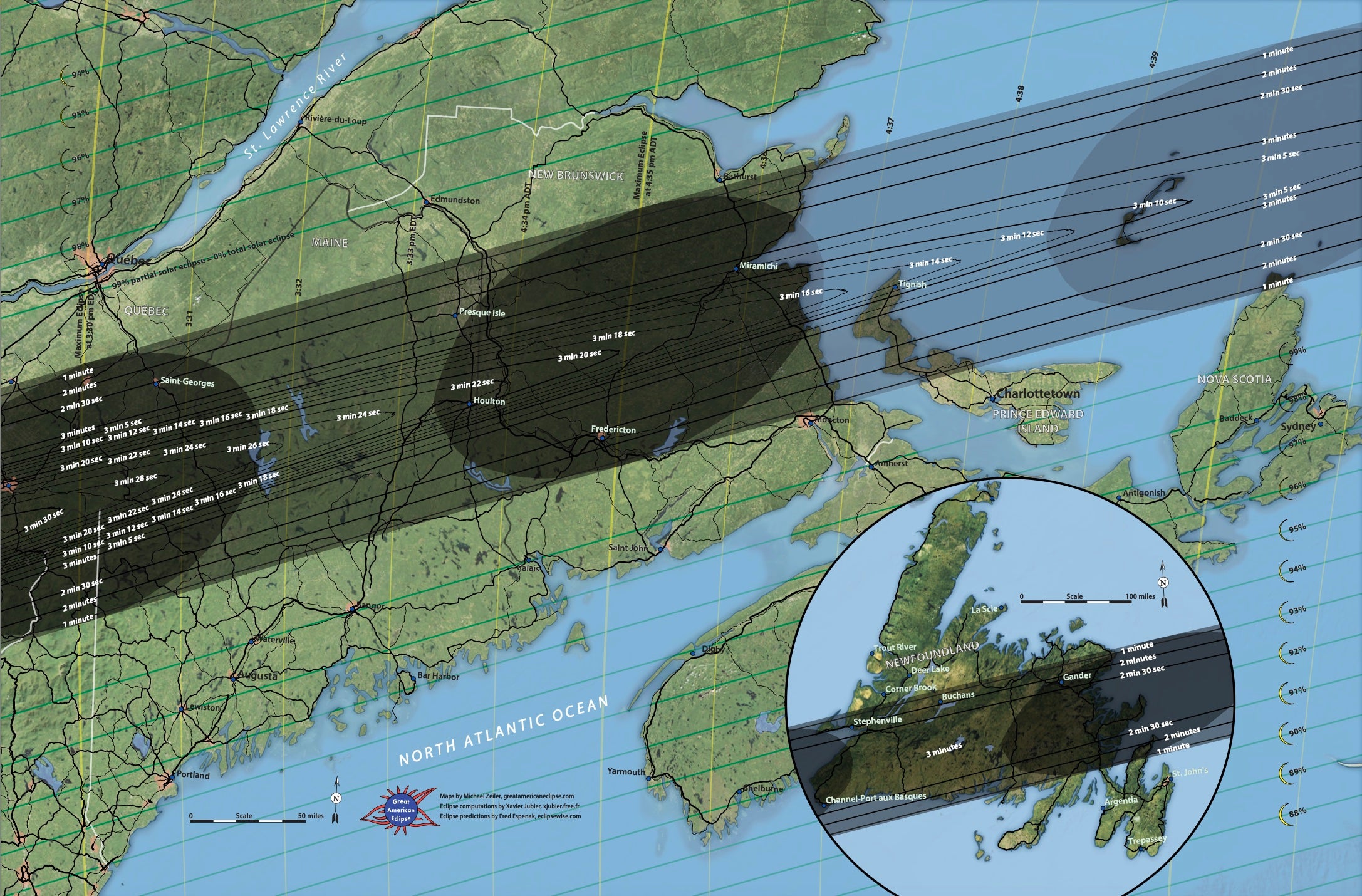
Astronomy Magazine editor Dave Eicher and contributor Michael Bakich have experienced dozens of eclipses. Got a question for them? Join us here live at 12:30 p.m. Central on Monday, April 1 .









